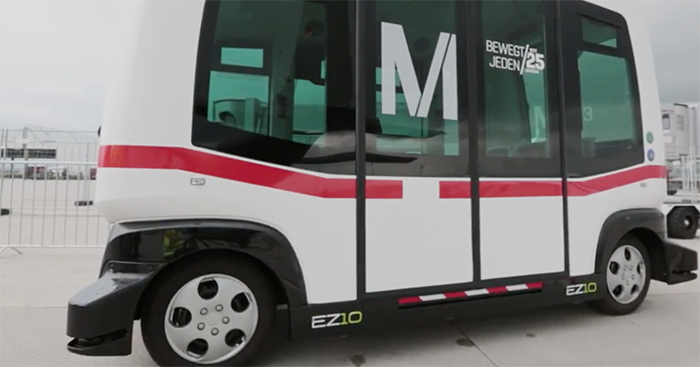Cape Town will experience their very driverless public transport during a trial in October, which is Transport Month.
According to Victor Radebe, executive director of the Mobility centre for Africa (MCA), they have been granted permission by national government to start trials. One of two electric-powered candidates is currently being considered for the test. These are the EZ10 by EasyMile, or the ARMA vehicle by Navya.
The EZ10 by EasyMile
This vehicle is electric-powered and can travel up to 45 km per hour. Up to fifteen passengers can be comfortably seated in this shuttle, and operates on either fixed or on-demand routes. It is supervised by EasyMile’s fleet management software, and operates on existing roads only.
ARMA by Navya
This autonomous vehicle is powered by electricity as well, with an average battery life of nine hours. It has a top speed of 25 km per hour, and seats 11 passengers along with 4 standing passengers.
One of the locations earmarked for the trial is the V&A Waterfront on the Mother City’s Foreshore. Other locations being considered includes Durban’s beachfront, the Gautrain station in Sandton and the CSIR’s innovation hub at the University of Pretoria.
What happens if there is an accident?
According to Patrick Bracher, director of the Norton Rose Fulbright law firm, South Africa’s laws pertaining to autonomous vehicles may be similar to the United Kingdom’s recently published Automated and Electric Vehicles Bill.
The UK’s proposed laws state that if an accident is caused by an insured autonomous vehicle, the insurers is liable to for the damage caused to any persons implicated in the accident. If the vehicle is not insured, the owner of the vehicle is liable for the damage.
A vehicle is considered to be “autonomous” when it is not being controlled and does not need to be monitored by any individual. If the vehicle is being monitored or controlled by an individual, ordinary principles of negligence may apply. The proposed legislation also contains a chapter on the recharging of electric vehicles.
If an accident or damage caused is by any extent the fault of the the injured party, the law of contributory negligence will be invoked and will result in a lesser fine or sentence.






